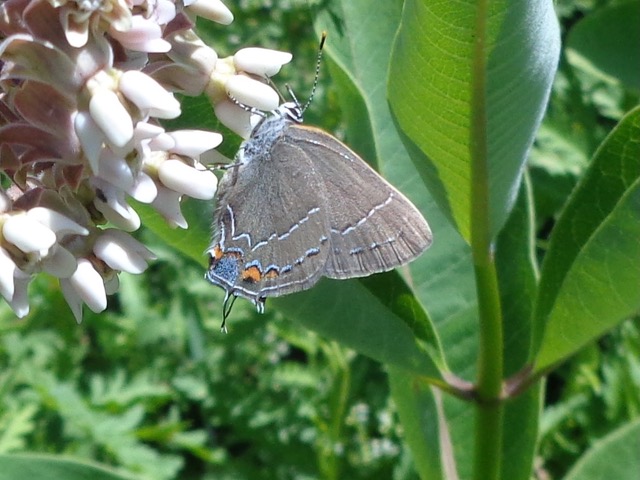Terri Armata, one of Vermont’s most ardent butterfly watchers, has done it again. For the second year in a row she has recorded a new butterfly species for Vermont. On June 30th in the far southwest corner of Vermont she photographed a Northern Oak Hairstreak (Satyrium favonius ontario) among the Banded Hairstreaks (Satyrium calanus) nectaring at Common Milkweed.
Terri added her sighting and photograph with 7 other species she observed on a checklist to our eButterfly project–checklist number 117328, one of more than a thousand checklists she has shared to help track Vermont butterfly populations.
This is one of the next butterflies we expected to show up in Vermont from further south. It was considered to be extremely rare in Massachusetts until the 1970s. Oak Hairstreaks now range from southeastern Colorado to Michigan east to Massachusetts and south into Florida and Texas. The Northern Oak Hairstreak, one of four subspecies occurs from Georgia north through southern New England and west through the Great Plains.
The Northern Oak Hairstreak lays its eggs predominantly on White Oak (Quercus alba) in the northern edge of its range, which is found in the valleys of Vermont. It might be more common here than we think. It likely lives covertly, hidden from the eyes of butterfly watchers, feeding (on galls and Hemiptera honeydew) and breeding high overhead in the leaves and branches of the forest canopy.
Terri’s discovery represents the 116th butterfly species to be found in Vermont. What will be the next species discovered? We can’t wait to find out! You can check out all of the butterflies at the Vermont Butterfly Atlas and add your sightings at e-Butterfly.org.







